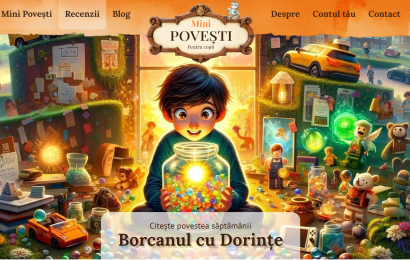Colliers: Retail sales for non-food items have returned to pre Covid-19 levels despite the lockdown period when stores were closed
2020 has been the most difficult year for the Romanian retail segment since the 2009-2010 recession, with shopping centres closed for approximately two months during the spring of 2020, but the overall impact remains uneven. Retailers that already had online shops were the winners, as online sales expanded by about 30% in the first 9 months of 2020, helping bring overall sales back to pre Covid-19 levels, with the non-food sector up by 4%, according to the “ExCEEding Borders. The Retail in Pandemic in CEE-17 Countries” report released by Colliers International.
With the labour market in quite decent shape – modest rise in unemployment, wage growth remains positive, albeit slower than before the crisis -, the retail market in Romania began to recover and has recorded a positive trend. Now consumption is already above pre-crisis highs, though in a different structure. Spending migrated a bit from some categories, like clothing, to others, such as a variety of household items and sporting items. 5 other countries in the region managed the same performance – i.e. surpassing their pre-COVID levels, which are Estonia, Lithuania, Poland, Serbia and Slovakia.
Colliers consultants are observing a sharp increase in consumer activity in e-commerce which has become a fundamental element of the ongoing transformation of the retail sector, related to the development of technology and changes in consumer behavior. There has also been a significant increase in the percentage of people over the age of 55, who are now shifting from shopping in off-line to on-line stores.
”The pandemic has forced retailers to adapt to the new reality in a matter of weeks, that meaning operational improvements, focus on online marketing or starting online sales from scratch, collaboration with delivery companies or supermarkets as places to collect orders from, implementation of safety measures, correlation of the stock with the changing demand, etc. That led to a relatively fast recovery of the sales after the lockdown and even slight increase of sales for some categories such as food, home related products, sports or cosmetics. These are the retailers that are usually present in retail parks or stand alone units, so the performance of this type of scheme was almost not affected by Covid. Investors have acknowledged that and immediately focused more on this type of investment product, which lead to increased demand on this segment and slight compression of yields in the large cities”, says Simina Niculiță, Partner & Head of Retail Agency at Colliers International.
Still, in shopping centres footfall is significantly below last year’s levels, though information suggests that the average spending ticket has increased for those who do enter malls. More exactly, Colliers International’s exCEEding Borders report shows a 40% decrease in monthly visits to shopping centers in the first half of 2020, compared to 2019. Currently, in Romania there are 89 modern shopping centers, with an area available for rent of 2.77 million square meters.
“Although the habits of consumers have been affected by the pandemic, the supply of retail space in Romania increased. A retail park, in Miercurea Ciuc, with a bit under 12,000 square meters, was inaugurated in the first half of the year. While several retail projects were delayed amid the coronavirus lockdown, others moved forward, like NEPI’s Shopping City Targu Mures (nearly 40,000 sqm), completed in July, and AFI Brașov (45,000 sqm) and Prime Kapital’s Dambovita Mall (33,000 sqm) opened with little delay in autumn. In the immediate future, we expect to see the bulk of investments in smaller convenience centres and parks”, specifies Simina Niculiță.
Overall, the Covid-19 pandemic has disrupted both the operation and development of retail real estate markets worldwide, as well as in the CEE-17 countries. The Government restrictions imposed on the operation of shops, service outlets, gastronomy, entertainment and leisure, have led to a dynamic growth of e-commerce sales and to changes in consumer behaviour. These have also contributed to a 20-45% (depending on the country) decline in footfall figures in shopping centres, when we compared data from the middle of 2019.
There has been an increase in the number of small shopping centre formats and retail parks, considered by both developers and tenants as profitable investments, and by consumers as comfortable and safe places to shop. At present, there are approximately 670 such smaller centres operating in the CEE-17 countries, with a total GLA of 6 million square meters. Overall, in the CEE-17, there are nearly 1,670 retail facilities totalling 34,6 million square meters, which is comparable to the average size of one of Bucharest’s sectors.






